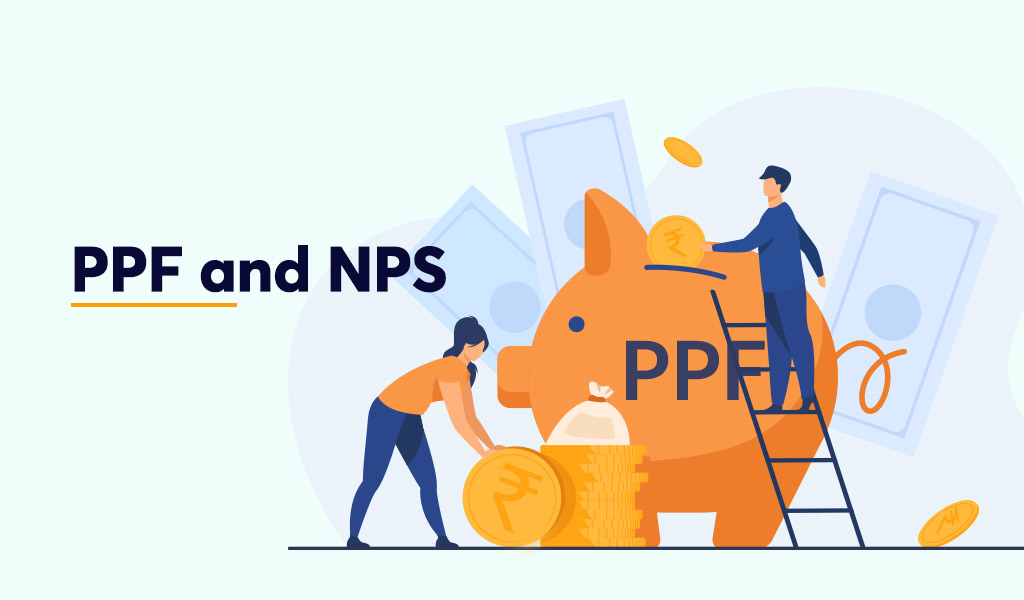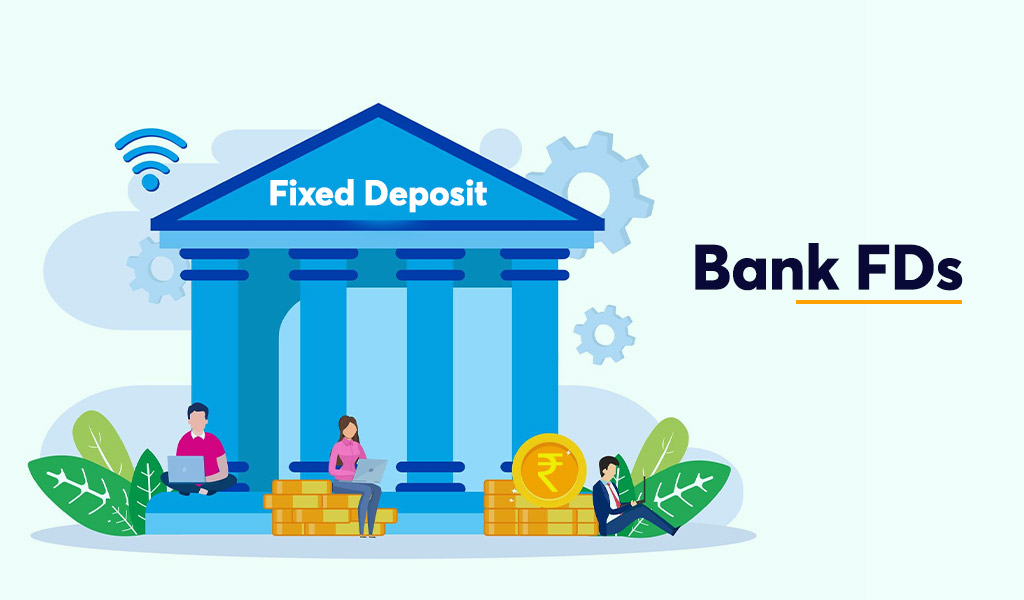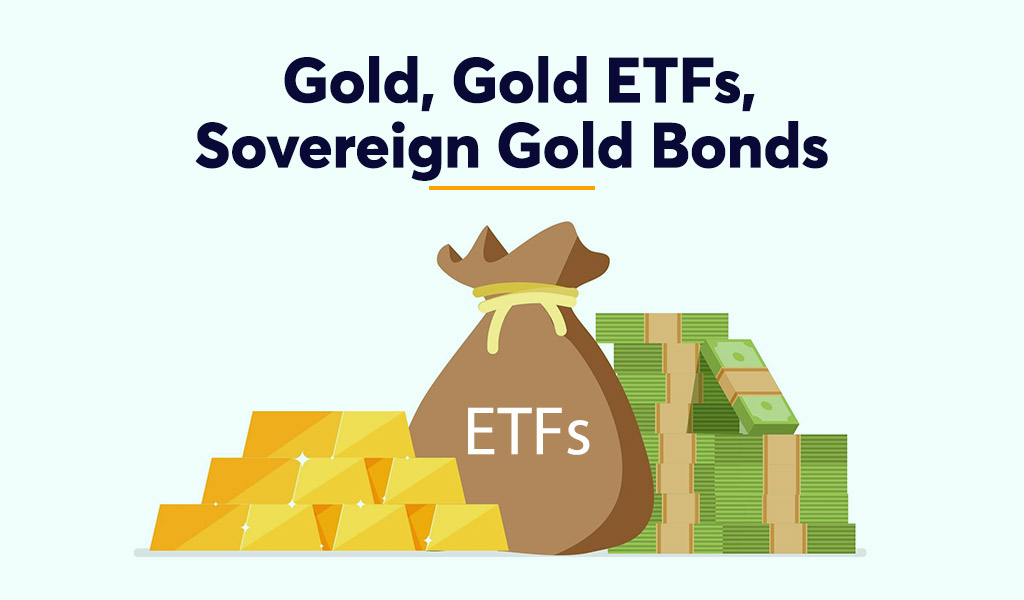
We have reached 2023 and the new year brings new opportunities to start our investing journey. The importance of saving and investing has been further stressed by the ongoing war, increasing inflation, and the recent pandemic that left many families grappling for finances putting the future of their families, especially children, in jeopardy. But the crucial question is where to invest and how to build a successful investment portfolio.
Given here are a few investment options for new and young investors to effectively utilise their income and secure their financial future in the long run.

It is often said that ‘money making money is the best form of investment’. It is also one of the strongest principles followed by well-known investors like Warren Buffet. The prime purpose of investments is to allow them to accumulate over a period of time so that they are sufficient to meet the targeted financial goals. For this investors need to start at the earliest which allows them to gain the maximum benefit of compounding. Many investment options like mutual funds, PPF, etc. work on the principle of compounding where the returns from the investments are also added to the corpus and can yield further returns. This benefit is the single most important factor used to grow investments.
Another benefit of starting early investments is the chance to weather the market fluctuations or economic fluctuations that are part and parcel of any industry. By having a longer time to build the investment corpus, investors can afford to ignore the short-term volatility and focus on the long-term benefits of investing.
Now that we have established the importance of investing and starting early on, let us now focus on the popular investment options that are available to investors in 2023.

Index funds and ETFs (Exchange Traded Funds) are passive funds that are low-risk funds and can provide good returns to investors. These funds follow or track the performance of their target benchmark for their performance. The composition of the fund is also based on the composition of the benchmark hence, they also have the diversification benefit that is inherent to mutual funds. The returns are subject to tracking errors and the expense ratio of these funds is quite nominal as compared to active mutual funds. Moreover, ETFs provide the added benefit of being able to be traded on the stock exchanges like a normal stock. This increases the liquidity of these products significantly providing additional benefits to investors. Investing in index funds and ETFs can be an ideal investment choice for risk-averse or novice investors who aim to get better returns but want to avoid investing in volatile investment options.

Mutual funds are an ocean of investment opportunities. These are dynamic investment options that have become staples in almost every investment portfolio. The multiple benefits like the possibility of getting inflation-beating returns, manageable risk, diverse categories of mutual funds, and flexible investment options are a few of the attractions that make them a near-perfect investment option to build a sound investment corpus. Many investors also think that they do not have huge amounts to start their investment portfolio and that often becomes the reason to delay investing. Mutual funds are a good solution to such issues as they provide the option of investing as low as Rs. 100 through SIP (Systematic Investment Plan) to gradually meet their financial goals in the long run. Mutual funds also offer different categories of investment like equity mutual funds, debt mutual funds, and hybrid mutual funds. Investors can choose their preferred fund based on a thorough risk-return analysis and can also alter their investments in the long run as per their changing needs.

Stock markets investments and trading has seen a renewed interest especially during and the post-pandemic period. India has seen a record increase of 41% in the number of Demat accounts opened between October 2021 to October 2022. Stock markets although may seem riskier options for many, they can provide attractive returns and the risk can also be managed by strategic investment in good quality stocks. Young investors can also afford to be more aggressive in their investment in stock markets as they have limited responsibilities at an early stage of life. At this time they can invest more in quality mid-cap or small-cap stocks that have the potential to provide more returns than the market average. At a later stage in life or for risk-averse investors, blue chip stocks or dividend-yielding stocks can be a good investment option as they can provide more or less stable returns at lower risks.

Investment in real-estate is valued quite highly, especially in the Indian market. It is not only seen as the ultimate security but also as a prestige point in many circles. Also, the concept of renting a home forever rather than owning one is still alien in Indian society. However, with the growing real estate prices, this dream is quite distant for many individuals. Therefore, it is essential to invest in real estate at the earliest. Young investors can get home loans at cheaper interest rates and also have the benefit of longer tenure to repay them through comparatively lower EMIs. The interest rates on home loans in a developing economy like India are often capped at 10%. Furthermore, women investors are awarded a concession in interest rates by many banks and NBFCs and the interest rate can also be negotiated if the individual has a sound credit score. The additional benefit of home loans is the tax deduction under section 80C up to Rs. 1,50,000 as well as up to Rs. 2,00,000 under section 24 for the interest paid on the home loan.

Insurance should be one of the top priorities of any individual to safeguard the financial future of their family in any unfortunate turn of events. The recent pandemic saw many families losing their sole breadwinner and their financial future was left in a mess. This situation can be avoided by taking timely insurance coverage. It is a known fact that the cost of insurance increases as the age of the individual increases. Therefore, by getting insurance coverage early on, preferably when a person is in their 20s, they can benefit by getting higher insurance coverage at lower premiums. Investors also get a benefit of deduction under section 80C of the Income Tax Act, 1961 for the premium paid towards insurance coverage.

The need for adequate health insurance is felt by everyone in today's world in the face of rising medical costs. Many young professionals often feel they do not need personal health insurance coverage as this need is covered by corporates. However, once the corporate job is over, this coverage is also terminated. At a later stage in life getting health insurance coverage will be quite heavy on their pocket. Hence, even if an individual is part of a group health insurance provided by their job, it is essential that they get personal health insurance coverage for themselves and their families. Tax benefits under section 80D are an additional benefit of getting health insurance.

PPF (Public Provident Fund) is one of the topmost investment options even today after decades of being introduced in the Indian economy. It is one of the highest interest-paying risk-free investments that is backed by the government of India. The current interest rate of PPF is 7.1% and has a lock-in period of 15 years which allows the corpus to gradually build to reach the financial targets. Furthermore, investors get tax benefits from investing in PPF in the form of a deduction of up to Rs. 1,50,000 under section 80C of the Income Tax Act, 1961. Investors also have the option to get a loan against their PPF account and can withdraw from the same in case of any emergency subject to certain conditions.
NPS stands for the National Pension Scheme which is also a government-backed pension scheme providing interest at a rate starting from 9% and can vary depending on the asset class selected for investment. Investors can get a tax deduction of up to Rs. 1,50,000 under section 80C through investing in NPS as well as an additional deduction of Rs. 50,000 under section 80CCD. Any individual over the age of 18 years can invest in this scheme and can redeem their investment upon reaching the age of 60 years or 70 years. Upon maturity of the investment, they can withdraw 60% of the fund and the rest of the fund will be invested in any of the preselect annuity plans that will provide them with additional returns periodically.

Bank Fixed Deposits (FDs) are a traditional investment option that is often considered to be obsolete by young investors. However, bank FD is a secure investment option where investors can earn interest starting from 3% to 7% or more depending on the bank. Also, senior citizens get marginally additional interest in their FDs. Bank FDs are safe from the volatility in stock market and also provide deductions under section 80C up to Rs. 1,50,000 for investment in tax saving Bank FDs with a lock-in period of 5 years.

Indians are in love with the yellow metal and investment in gold is often part of an investment portfolio. However, many young investors think that this is a dead investment as the gold will be lying idle in the bank lockers and returns are earned only after liquidating the asset. However, gold is considered to be a good hedge against volatile markets and it is an evergreen investment that can hardly provide negative returns. Moreover, investors can also use this asset to secure loans and use it as collateral.
Gold ETFs and Sovereign Gold Bonds are dynamic forms of investment in gold with all the benefits of the yellow metal without the risks like loss due to theft or high storage costs, etc. Gold ETFs can be traded like any other ETF in the open market making them highly liquid. They track the prices of real gold and hence can provide decent returns. Sovereign Gold Bonds are government-backed gold bonds with a tenure of 8 years and providing interest at the rate of 2.5% per annum. The interest is paid to the investor semiannually and also provides the benefit of zero capital gains at the time of maturity of the bond. Investors can invest a minimum of 1 gram up to a maximum of 4 kg of gold under this scheme. HUFs can also invest in these bonds up to 4 kgs of gold.
These are some of the popular investment options that can be opted for by new and young investors to create a successful investment portfolio. Investments need not be in lakhs at the very onset of creating a portfolio but gradually and systematically adding to the investments can create a sound corpus that can be used to meet all the financial goals like retirement benefits, children’s education, wedding, travel, emergency funds, medical fund, etc.
Hope this article was helpful in providing a basic understanding of various investment options. Let us know if you want more details about these options or any other investment product.
Till then Happy Reading!
Read More: How do mutual funds work?

As we move into the second half of 2025, global trade tensions continue to domin...

Investing in stocks is one of the most effective ways to build long-term wealth....

There are very few things that investors agree on, and one of them is that earn...